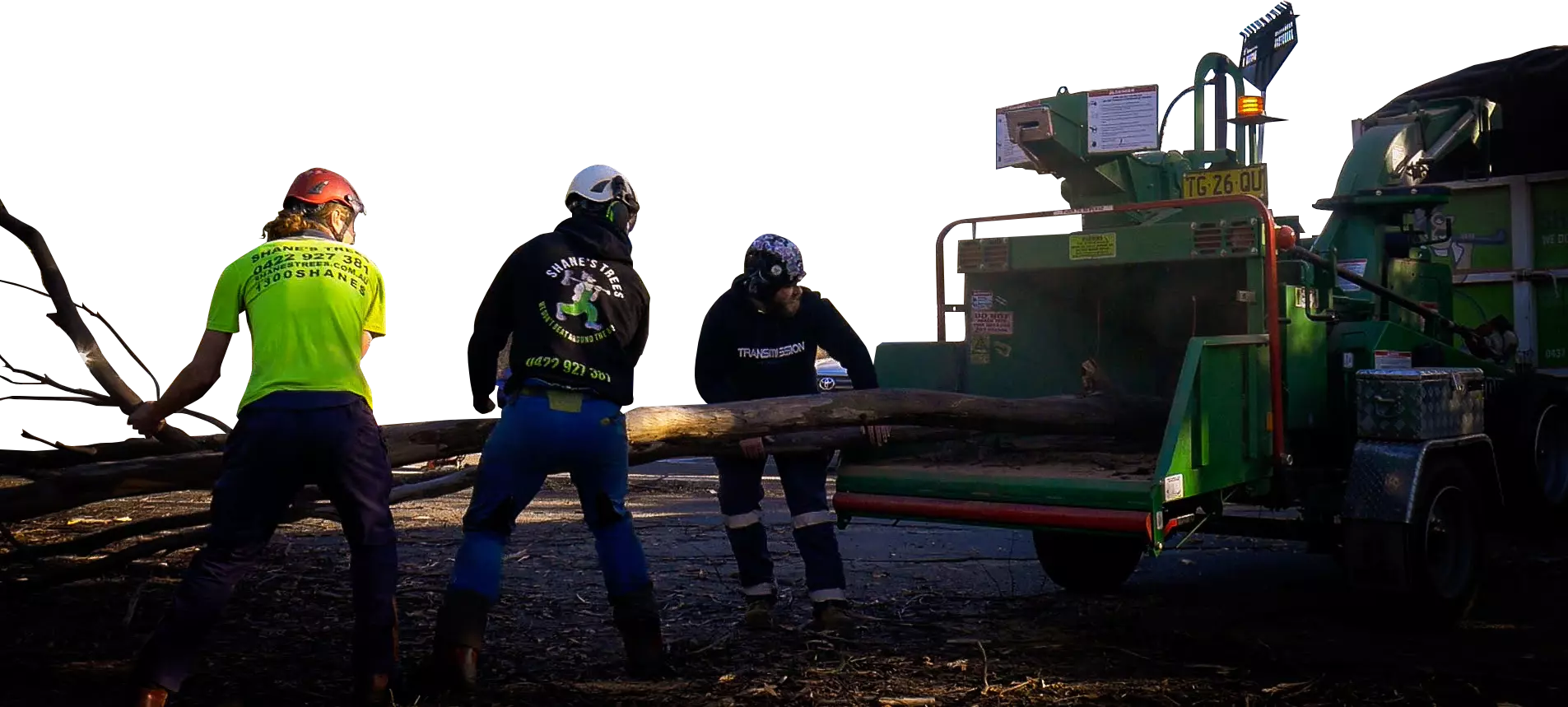35
Years’
Experience
40K+
Delighted
Clients
300+
5-Star
Google Review
5K
Dangerous Tree
Recycled PER Year
1. Am I Allowed To Remove My Tree In The First Place?
Seeking council approval is the first stage of any tree-removal project – and in most cases you need an appropriate reason to back up your application. Sure, there are trees which are exempt from your local tree preservation order and won’t require approval, but you’ll need to submit an application to the shire council for all protected species.
Here are some genuine reasons for removing trees on private land:
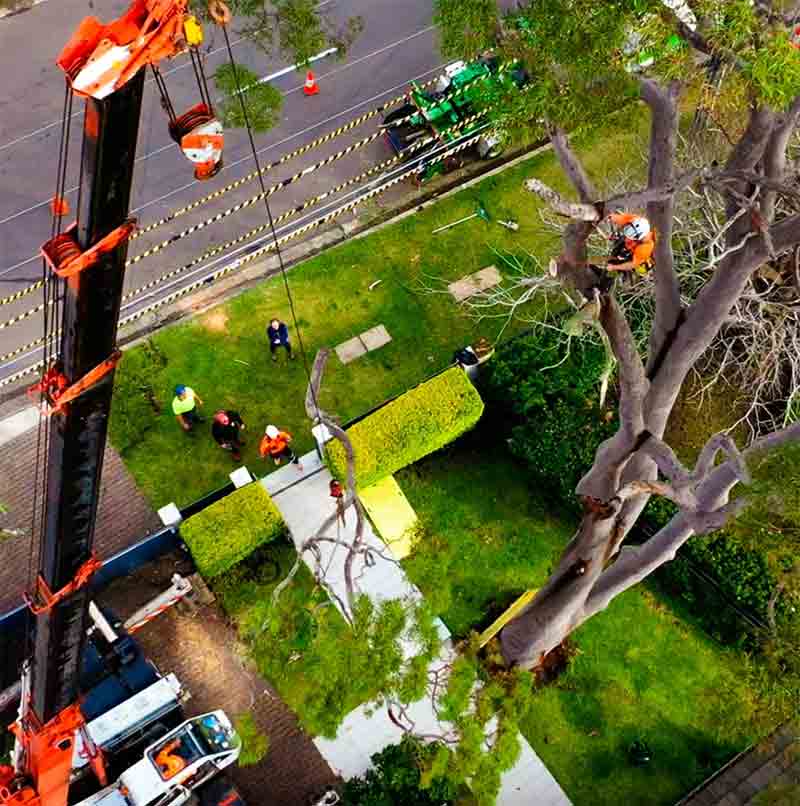
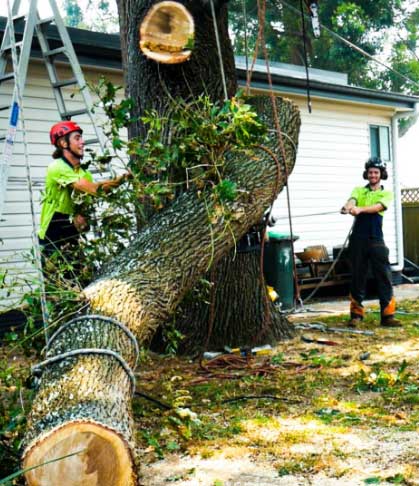
And here are some reasons that are typically not valid in the eyes of the council:
If the tree (or trees) are being removed to support a development, you’d need to specify this on your application – and you’d usually need to submit supporting evidence that there’s no other way for the development to proceed without removing the trees. This can be done using a Cert 5 private consulting arborist who will be able to provide you with an Arborist Report.
If you’re located in a bushfire zone, there is some good news. The 10/50 bushfire clearing entitlement is a state government regulation that supersedes your local council’s regulations. You’ll be able to:
A tree is classed as any vegetation having a circumference in the trunk of 300mm at chest height above ground level. By visiting the rural fire service website, you can get further clarification on whether your home is in a designated 10/50 zone. You can also Google “check if you’re in a 10/50 clearing area” or click here to go to our specific 10/50 page now.
2. Which Species of Trees Am I Allowed To Remove?
Every local Sydney and Illawarra council has its own definition for categorizing trees – so it always pays to look up your local council’s website. For example, Sutherland Shire defines a protected tree as “a single or multi-trunked tree with a diameter of 100mm or more, measured at 500mm above ground level”.
Most councils have a list of trees that are exempt from the tree preservation order – but this can differ (sometimes a lot!) from council to council. Generally, if a tree is native, it has more chance of being protected in your region than an introduced species.
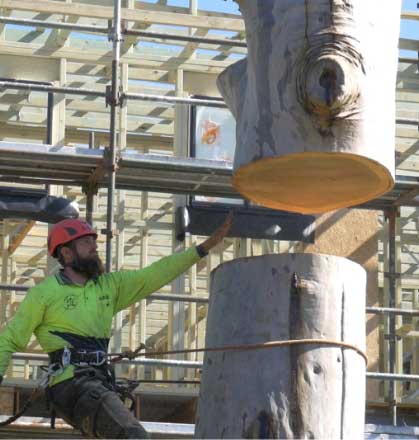
When looking for information on tree removal eligibility, the best place to look is on your local council’s website for the most updated list. Failing that, for quick reference without the jargon you can check out our location-specific pages on the Shane’s Trees website.
3. How Can I Guarantee The Safety of My Property & My Family?

As you can imagine, the tree removal industry is inherently dangerous. The most dangerous industry in the world – and there’s an awful lot of things that can (and do) go wrong. Branches and tree trunks are extremely heavy, often weighing many tons, and only experienced arborists know how to bring them to the ground safely.
When bringing down a tree, there are two methods – the fast one and the safe one! Arborists that provide cheaper quotes typically sacrifice the safer method for the faster method to save time and money. But it’s you that picks up the pieces (pun intended)…
The safer method takes a little more time and requires the use of heavy equipment such as cranes or cherry pickers – both of which may add money to a quote. On the flip side, paying a little extra to have the job done right may avoid larger costs such as getting a branch through a roof or – even worse – suffering a personal injury as a result of negligence. The last thing you want is a serious injury or death at your home.
At Shane’s Trees, we’re incredibly passionate about keeping our crew and the public safe. Our approach to safety is far beyond anything else you’ll find in the industry – and we follow a 7-star safety system built around qualifications, insurance, people, culture, audits, practicality and engagement.
Our supervisors are required to go through a detailed safety audit process upon arrival at a job, before briefing all staff and making them aware of any potential risks. All our arborists must be approved on-site before starting any physical work. We have weekly safety meetings with our team where we discuss any potential risks that may have presented through the week, and how we can mitigate them moving forward.
As you can see, our entire process is centered around ensuring the safety of our people, you, your property and your family members. We want you to sleep easy at night knowing your tree removal requirements are in the safest hands!
4. How Can I Tell If The Provider Is Using The Best Equipment?
Tree removal equipment costs hundreds of thousands of dollars to purchase and incur high maintenance costs. There’s not much we can do about that – but it’s a necessity when providing a first-class service. From our ropes, slings and pulleys right up to our large wood chippers, stump grinders and trucks, every component plays a critical role in safely and professionally pruning and removing trees.
A poorly-maintained harness could see a worker fall from a tree. Poorly-maintained ropes and slings could see a large branch smash through a roof or car – and even cause structural damage to your property. So, when you get your tree quotes, be sure to remember that a suspect tree lopper offering a cheap price is probably skimping on maintenance costs somewhere along the line!

Check your provider’s recent social posts and other web media to try and get a feel for if they’re using modern, well maintained equipment. How can you tell? Well, if the tools look dirty, rusty or damaged in any way, there’s some cause for concern!
5. What Risks Do I Need To Be Aware of?
In the tree removal industry, risks present themselves in many different forms – and usually have very severe consequences if they do occur. It’s absolutely essential that your chosen tree services contractors are actively identifying and mitigating potential risks through time-tested processes.
Common risks include:


At Shane’s Trees, we prepare for every tree removal job with a unique risk profile, and we’re continually assessing and mitigating common risks such as:
6. What Qualifications Should My Chosen Arborist Have?
You might not know this, but your run of the mill ‘tree lopper’ doesn’t actually need qualifications to carry out tree removal in New South Wales… Yikes! This is a huge issue to be aware of – because pretty much anyone with a chainsaw could legally provide you tree services.
So, what’s the difference between a qualified arborist and a regular tree lopper?
The tree lopper has probably worked as a labourer on a crew for a number of years. He’s picked up enough knowledge to tackle small to medium size projects with a small degree of confidence. In many cases, they won’t have the funding to purchase or maintain modern equipment, won’t be able to present you with current public liability insurance, won’t have workers compensation insurance and won’t have vehicles and equipment insured. He’ll probably give you a cheaper quote, though! It’s just up to you if that outweighs everything else… Because he has no formal education on tree management, he may also give you incorrect advice around the species and potential solutions to your tree problems. But worst of all, if something does go wrong, the insurance company will not pay as the person conducting the job is not qualified.
The qualified arborist holds a minimum Tafe Certificate 3 in Arboriculture (National Course Code: AHC30816) where they have gained the experience of spending many years on a tree removal team and held formal training in all aspects of bringing trees down safely – not to mention the botanical knowledge about species of trees.
The Cert 3 arborist has a wider knowledge and can give you better advice tailored to your specific requirements. He can present all of these things on request:

The next level of arborist holds a Cert 5 and is able to conduct private consultations such as arborist reports or TRAQ reports for council approvals and development approval. Shane’s Trees provide both Cert 3 and Cert 5 level arborist services, with our Cert 5 arborists able to conduct the following works:
7. Should I Be Checking Insurance Certificates?
Absolutely. As we’ve already discussed, one of the benefits of hiring a reputable tree company is getting total peace of mind around insurance. You always need to know if the right cover is in place in case something goes wrong. Take a look at the different types of insurance and why they’re so important:
Public Liability: This covers any unforeseen issues that may occur on your property – such as a tree falling on your house or a branch damaging your car.
Workers Compensation: This ensures the workers doing the job are protected in the event of an accident or malpractice. It’s calculated as a percentage of wages.
Professional indemnity insurance: This ensures that you are completely covered, even if you are given incorrect advice by an arborist and are sued or fined. Very few arborist companies have this insurance. Normally only the most professional companies have this type of insurance.
Vehicles & Equipment: Vehicles, wood chippers, cranes, cherry pickers and other equipment needs 3rd party property protection against any accidental damage.

We still strongly believe “the best insurance is one that you don’t use”. That’s why risk mitigation, quality arborists and a strong safety focus is the best insurance any company can have.
8. How Do I Check My Provider’s References?
Although at first it may seem difficult to obtain references from your tree removal company, a reputable provider will have different media associations where they publish and document their works to the community. Generally, lower-tier providers don’t have the financial resources (or time!) for managing and documenting their endeavors across social media and other web channels.
Here are some of the best resources you can use to make sure everything adds up:
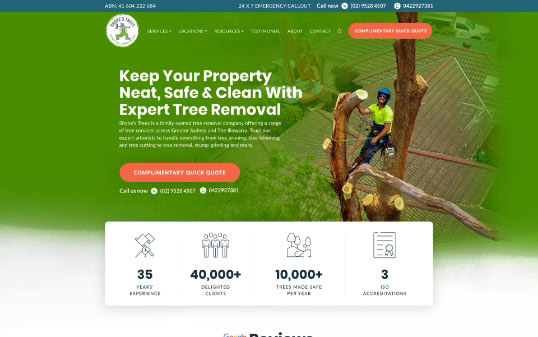
Here you should find certificates of currency, qualifications, insurance documents and much more. You should also see plenty of images showing previous jobs, demonstrating the scope of works and showing the state of tools and equipment. You should also find testimonials left by previous customers – but always try to verify these further as they can be manipulated quite easily.
Review

This is a very trustworthy source of reviews as customers must be logged into their own Google accounts independently to leave a review. This means the result can’t really be manipulated by the tree company – leaving you with a more credible result. If you see a tree business page on Google with plenty of reviews and very high ratings, there’s a good chance they’re a reputable provider.

This is another page that should receive semi-regular to regular updates if you’re dealing with a serious company. Here you can cross check images with claims made about jobs and equipment claims. You can also view contact details, response rates to messages and other useful info!

Instagram page:
@shanestrees
An insta page of a professional company should receive semi-regular to regular updates. Stories are a great way to cross check images with claims made about jobs and equipment claims.
Yelp Reviews:
These reviews work similar to Google reviews but on a different platform. Users must have an account and be logged in to leave a review – so it’s a pretty reliable source. The only downside with Yelp is that it’s not as popular as Google, so you’ll probably see fewer reviews.
Word of mouth referrals in your local area can be great if checked with the sources above. You can also verify the arborist companies ABN online.
9. What Should I Expect to Receive in an Estimate?
Obtaining a detailed written quote may seem like a no brainer – but very often the not-so-savvy ‘tree lopper’ will only give you a verbal quote based on a brief discussion. Needless to say, you need more of a guarantee than that – especially if they’ve left out some critical details. The last thing you need is for them to turn around midway through the job and say certain things were not included (like waste removal, stump grinding, equipment etc) and try to charge you extra after the fact.
On any professional quote, you should see the following:
A properly prepared quote is the sign of a professional provider – and our team has refined the quoting process over a number of years. We use a custom built software to deliver precise quotes quickly and effectively.
By using our tree removal quote forms on the Shane’s Trees website, you can upload your name, address, phone, email and all images relating to the job in under a minute. The more information you give us, the faster and more precise we can be with your online quote.
10. How Should Tree Waste Be Disposed?
Unfortunately, many ‘tree loppers’ will illegally dump tree waste to reduce their costs (and quotes!) This may be a moral consideration for you as a client. At Shane’s Trees, disposal is always included in our quotes unless you specifically ask us to leave the waste onsite. We legally dispose of ALL materials and recycle wherever possible. Recycling may include firewood, timber slabs and garden mulch.
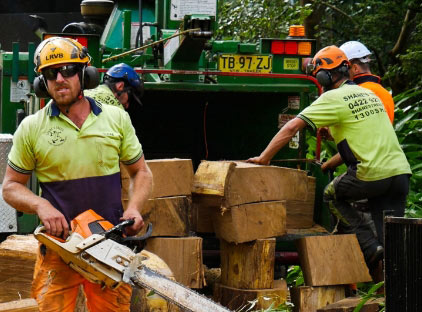
There are cases where councils have traced illegal dumping back to clients’ properties due to the type of tree. This puts the client (aka. you!) in an awkward position of needing to dob in their tree lopper, and face unnecessary confrontation. There have even been stories of tree loppers dumping waste at the client’s property after being paid for the job! Yes, there are some scumbags out there that you want to avoid at all costs…
11. What Are The Risks of Hiring an Unqualified Arborist?
As we stated before, a qualified arborist is trained in all safety aspects, best arboriculture practices and legal obligations for both themselves and you as the client. Hiring an unqualified person may result in some of these:
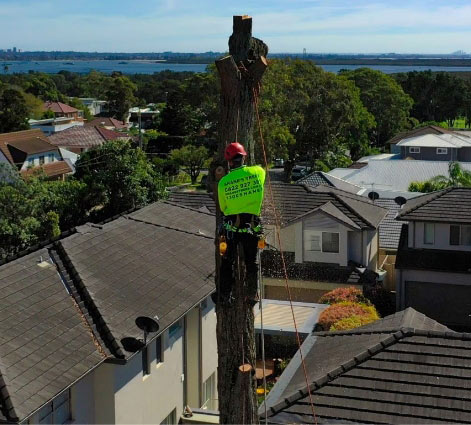
We really hope this article has given you some useful insight into the process of tree removal and given you the tools you need to select the right tree services contractor for your needs. However big or small your tree-related job might be, we want to hear from you! If you’ve got a question you want answered or if you just want to have a chat about our range of professional services – call Shanes Trees and we will get in touch. One of our team will get back to you before you can say ‘timber!’


